Into the blue
We skimmed out of the port on a warm sunny afternoon, the breeze caressing my short (and admittedly sparse) hair. Beneath the electric blue sky, we were moving out into the wide, shallow waters of the Rio Sado Estuary, Portugal. With the long, low-lying Tróia Peninsula in front, with biodiverse forests, golden sand dunes and beaches fringed in crystalline waters, plus a rather garish casino, I could easily imagine that this was the Bahamas, not a short one-hour train ride south of Portugal’s elegant but very urban capital, Lisbon.
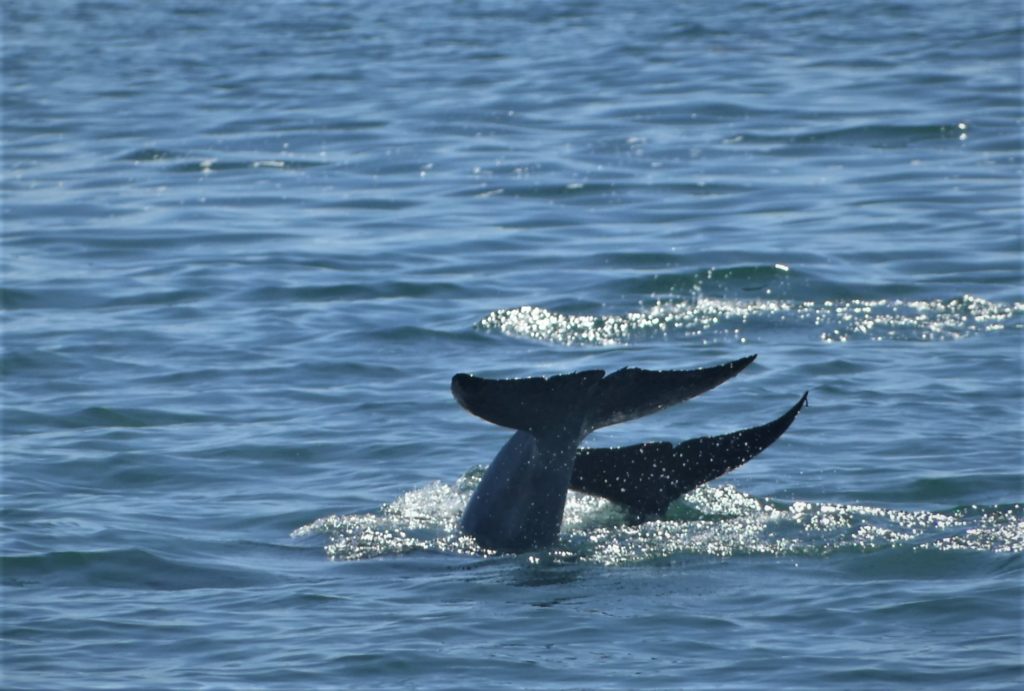
Looking back towards the port we had left just minutes before, a very different vista was on offer. The elegant, friendly and bustling town of Setúbal, with its colourful buildings, leafy parks and marinas. The accommodates every type of vessel, from small traditional sailing craft, to the Portuguese navy and commercial tankers. Rising above it all are the steep slopes of the Serra da Arrábida, plunging precipitously in the sea, a rugged mountain range fringing the southern edge of the Setúbal Peninsula, leading the eye out into the Atlantic. The contrast between the Serra and low Tróia Peninsula could have hardly been greater, but the diversity only added to the beauty of the scene.
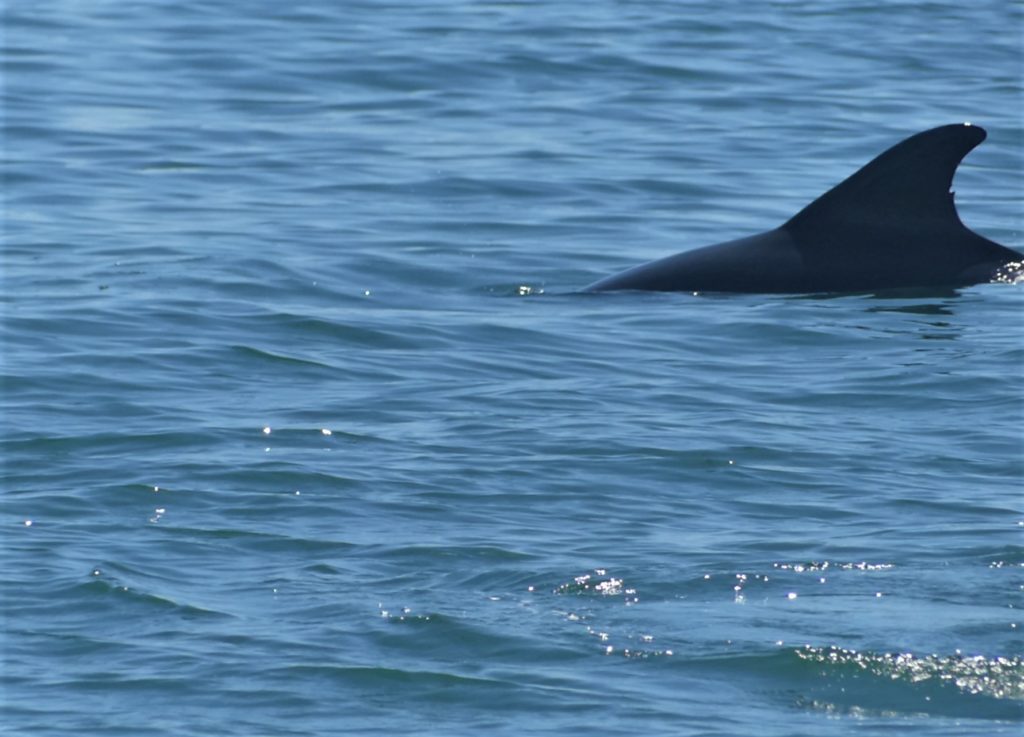
Dolphin time
My eyes, and those of everyone else on the boat, scanned the blue water…We weren’t here just for a joy ride. We were looking for the Sado’s marine residents and local celebrities. Only about 15 minutes had passed before an excited cry from one of the passengers told us they were close. Minutes later we were surrounded by the Sado’s resident pod of bottlenose dolphins, as they arced through the water, searching for a late lunch. Watching such intelligent and beautiful animals in the wild is a bewitching and magical experience. The crew, our excellent, knowledgeable guide Alex, and friendly pilot, Canoa, followed good dolphin watching practice, not approaching the dolphins too closely or disturbing their behaviour in any way, but dolphins are naturally curious and playful creatures, and on several occasions, they made close passes of our boat.
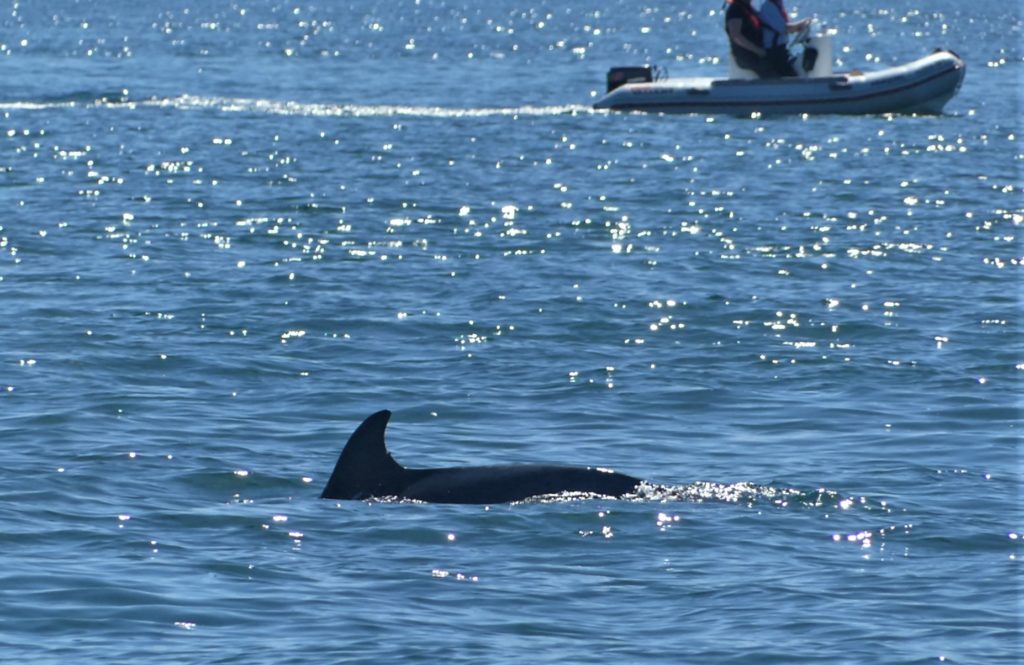
About 30 Bottlenose Dolphins call the Sado Estuary and the Setúbal Bay home, and in a welcome bit of positive news, it appears that the dolphins here in the Sado are doing well, living alongside humans without any harmful effects. This was clearly on show, as the pod had several playful young calves amongst them, guided gently by the experienced adults. The next generation of the estuary’s cetaceans.
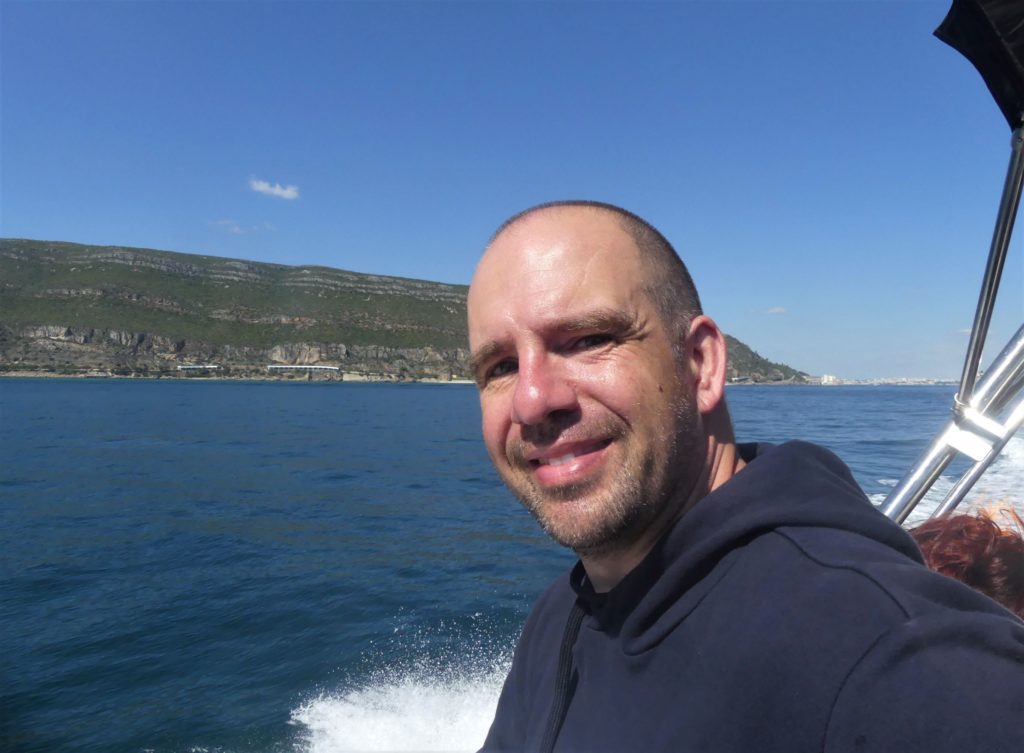
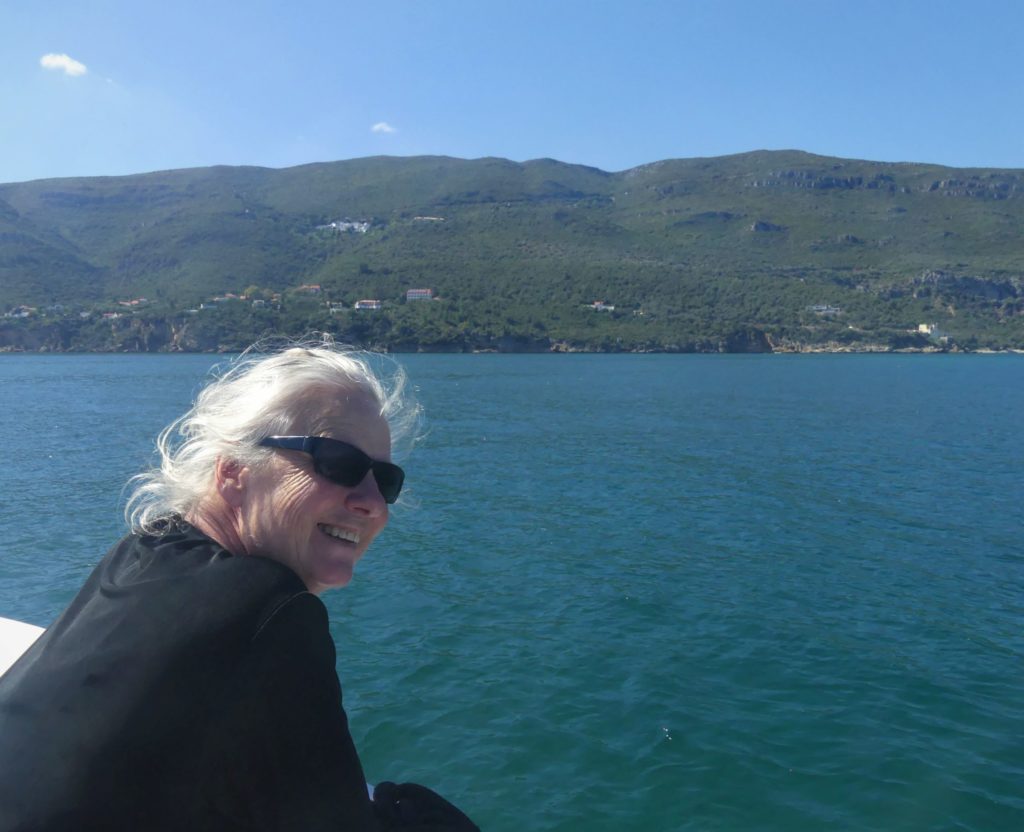
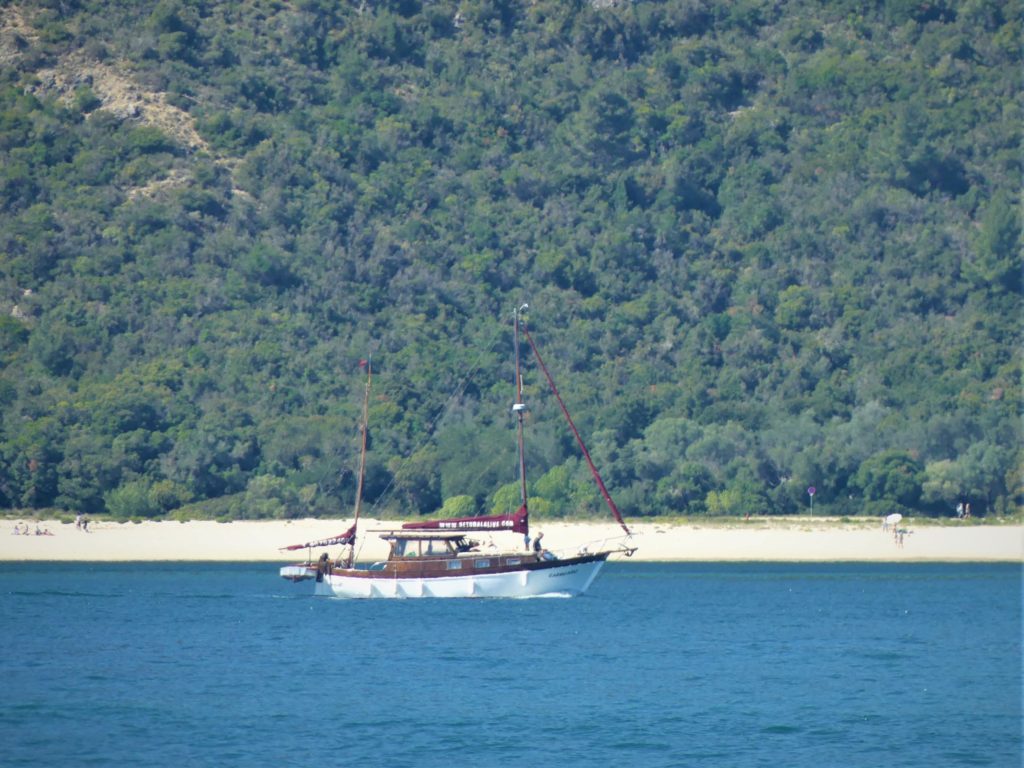
The Serra da Arrábida
After about 30 minutes of memorable viewing, it was time to leave the Dolphins in peace, so Canoa turned the boat around and we headed out into the Atlantic, along the magnificent southern fringe of the Serra da Arrábida. A protected area, the Parque Natural da Arrábida, is strikingly undeveloped, a coast of plunging mountains, green and lush with spring flowers, reminiscent of Amalfi in Southern Italy, but far less well known. At the base of hills, there are spectacular caves and secluded bays, again, with Portugal’s trademark gorgeous beaches. This is an ideal spot for exploring by sea kayak or coasteering and there are some great spots for snorkelling and diving, exploring the clear waters of this underwater realm.
I returned to the shore with my sister both inspired and energized by a short adventure that had exceeded expectations. Several small operators offer dolphin watching trips in the Sado. I travelled with Rotas do Sal (www.rotosdosal/pt.en/), a company with offices in the Setubal market. I would heartily recommend their services. They also offer birdwatching trips to the wetlands along the Sado river and into the Serra da Arrábida.
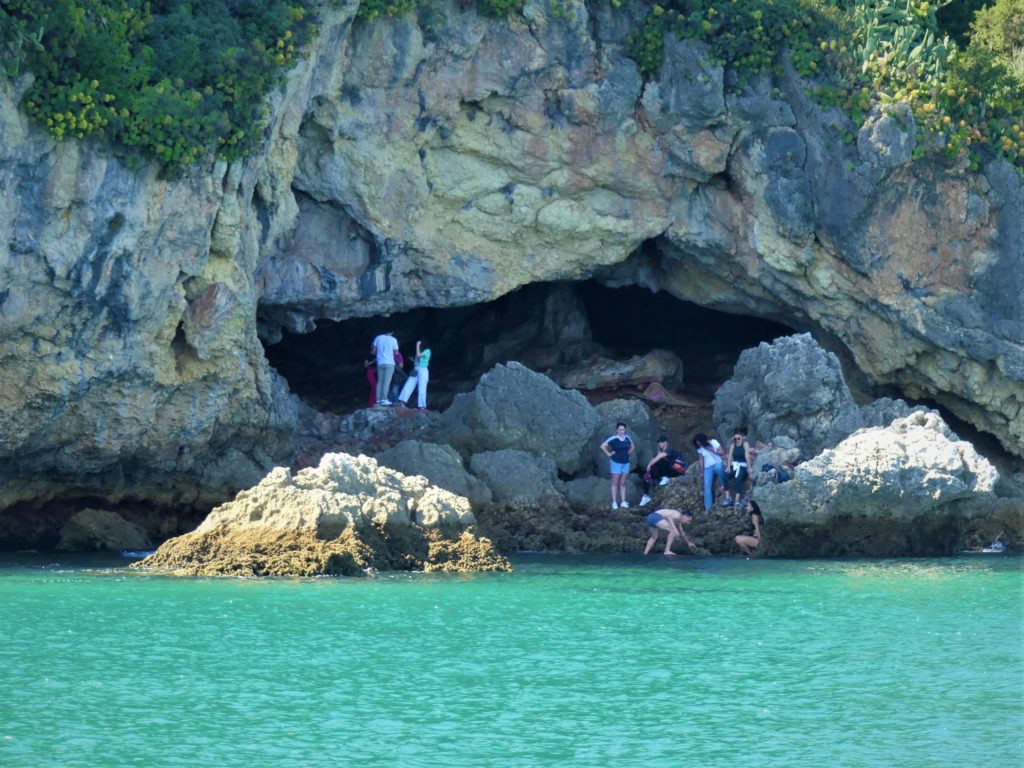
Setúbal
Setúbal itself is a charming, down-to-earth town. It’s well worth setting aside some time to explore its colourful waterfront, plazas, and winding backstreets. The market, set just back from the waterfront, is a bustling place, a perfect spot to experience local life, fresh produce and to get a feel of the town’s history and roots.
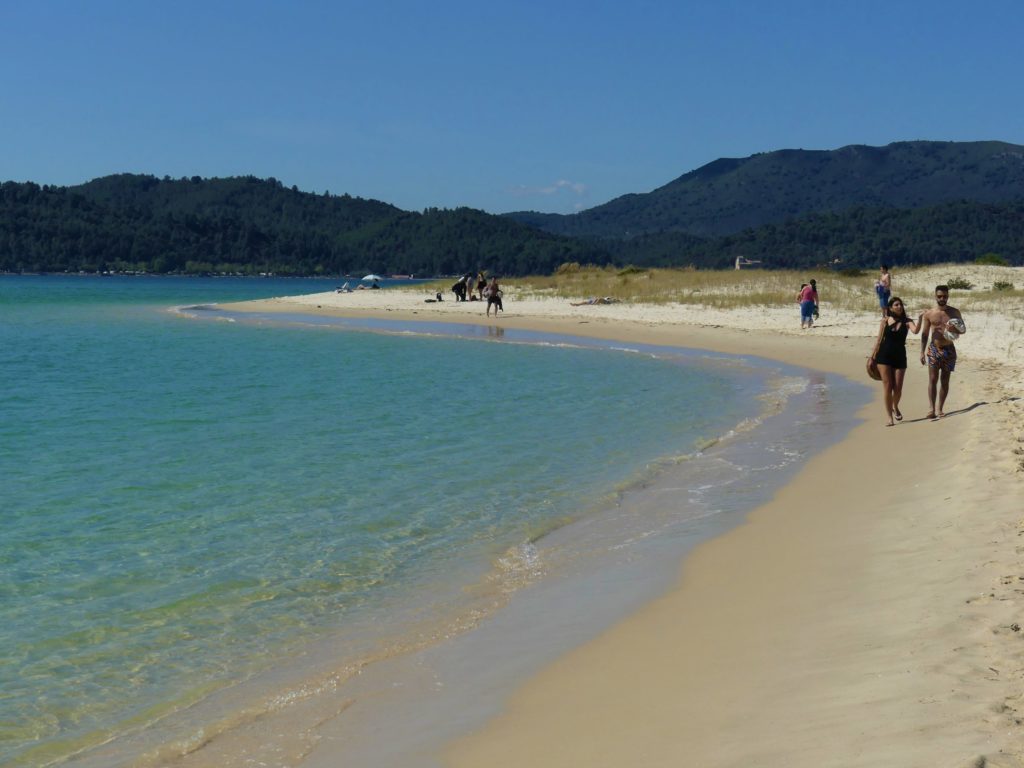
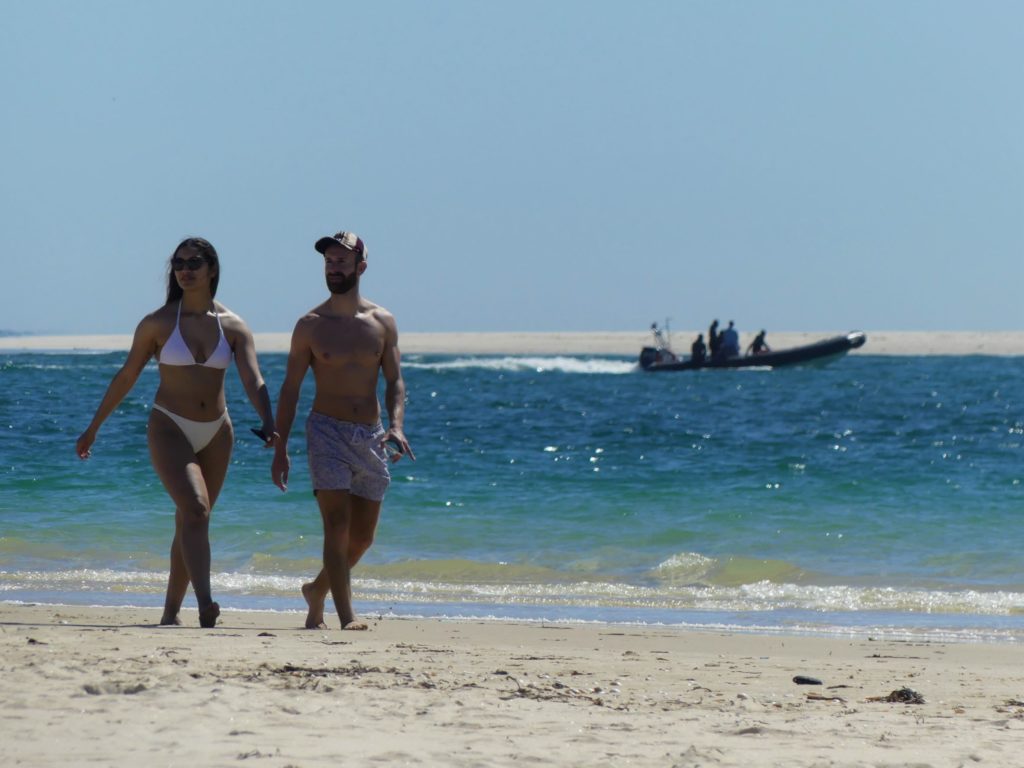
Glowering down on the town from above is the massive Sāo Filipe Fort, well worth a look, with its well-preserved 16th defences, an elegant tiled chapel, and magnificent panoramic views across Setúbal, the Sado estuary, and out into the Atlantic. It’s a great place to watch the sunset over a lovely corner of Portugal.
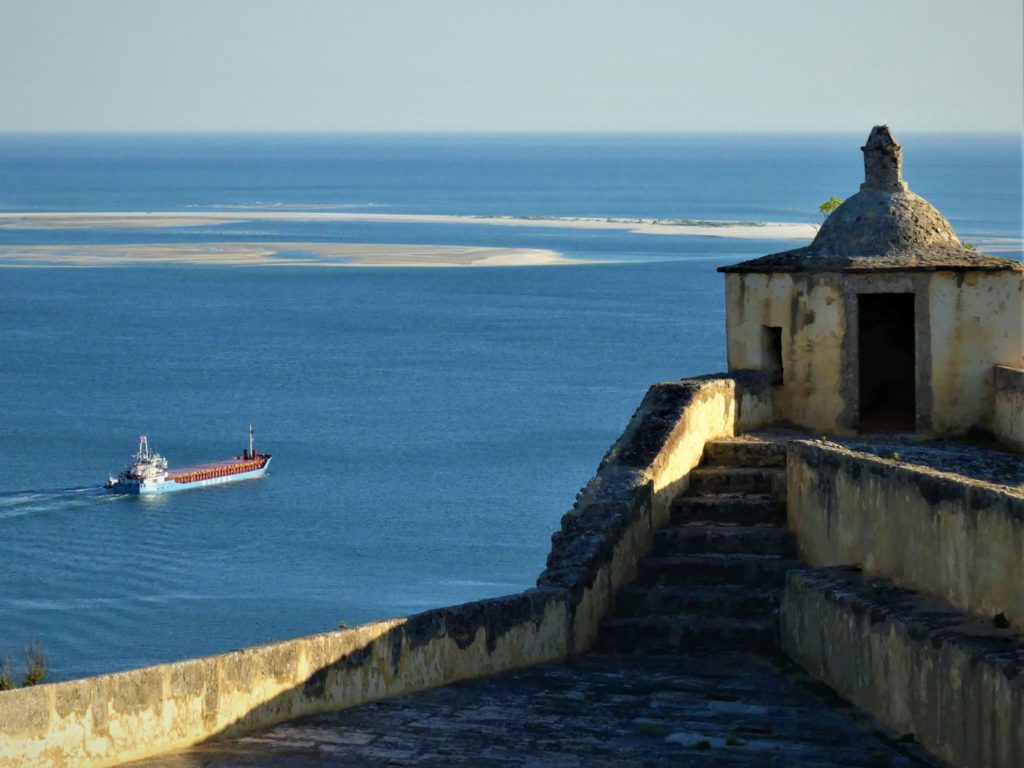
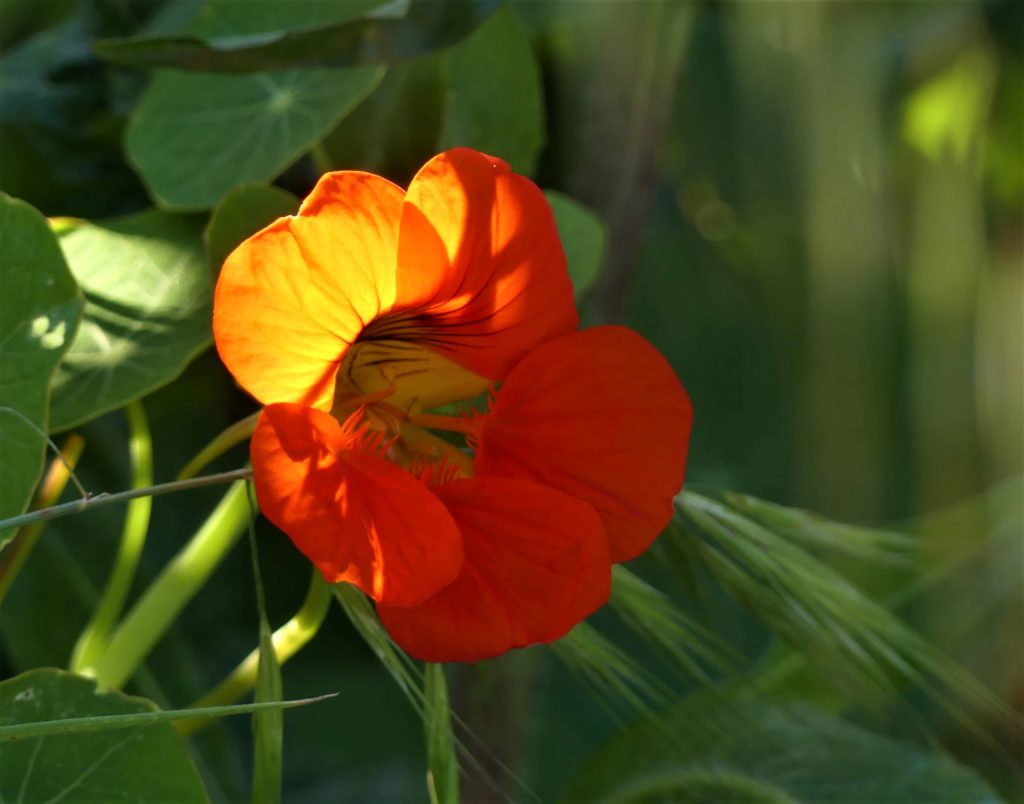
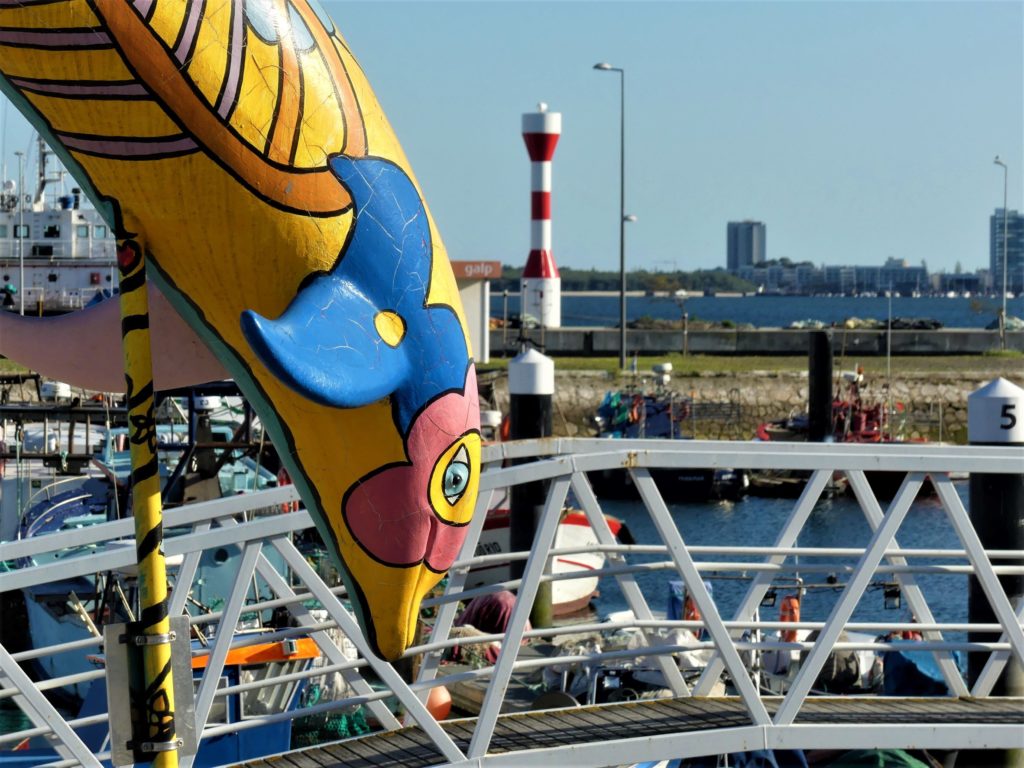
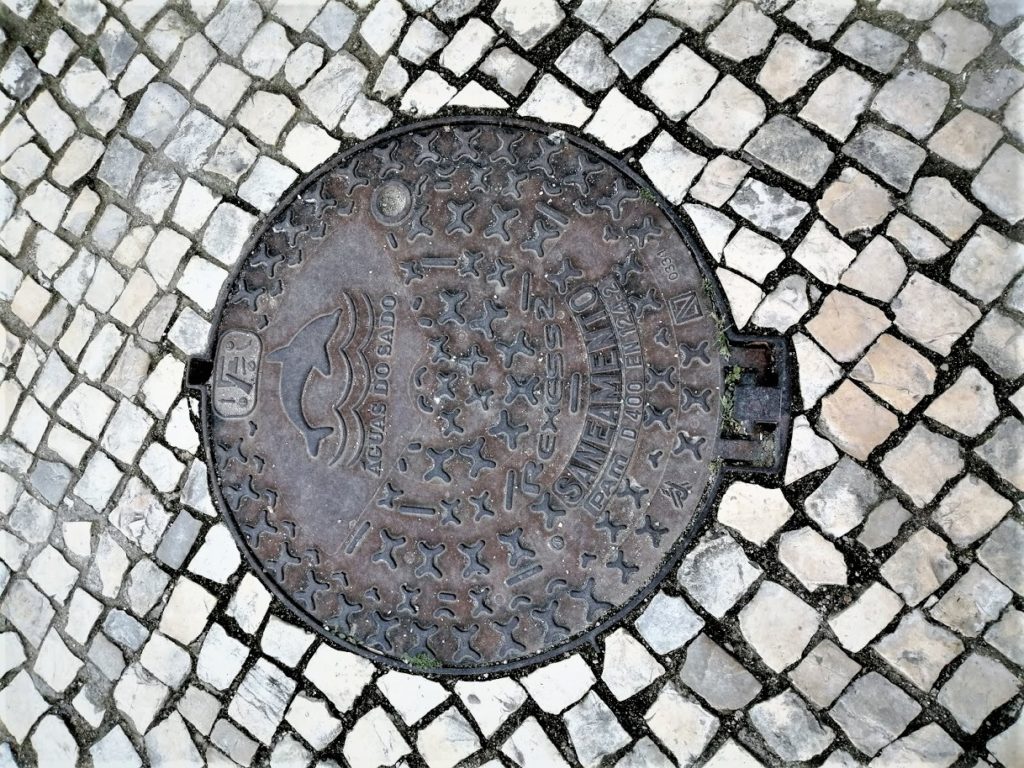
Lagoa de Albufeira
The centre of the Setúbal Peninsula is a lush quilt of woodlands and small farming communities. Continue to its Western edge and you’ll find more contrasts. The Peninsula’s North-Western edge is lined with an almost endless powder sand beach, pounded by rolling Atlantic breakers. If this is a little intimidating for non-water babies, Lagoa de Albufeira, a lagoon now cut off from the sea by a huge system of dunes, is a perfect alternative, its placid waters perfect for a bit of paddle boarding. The shallow waters of the lagoon are several degrees warmer than those of the Atlantic, so this is a good option for a dip in the early spring. There are also good spots for birdwatching in the wetlands above the lagoon.
Cabo Espichel
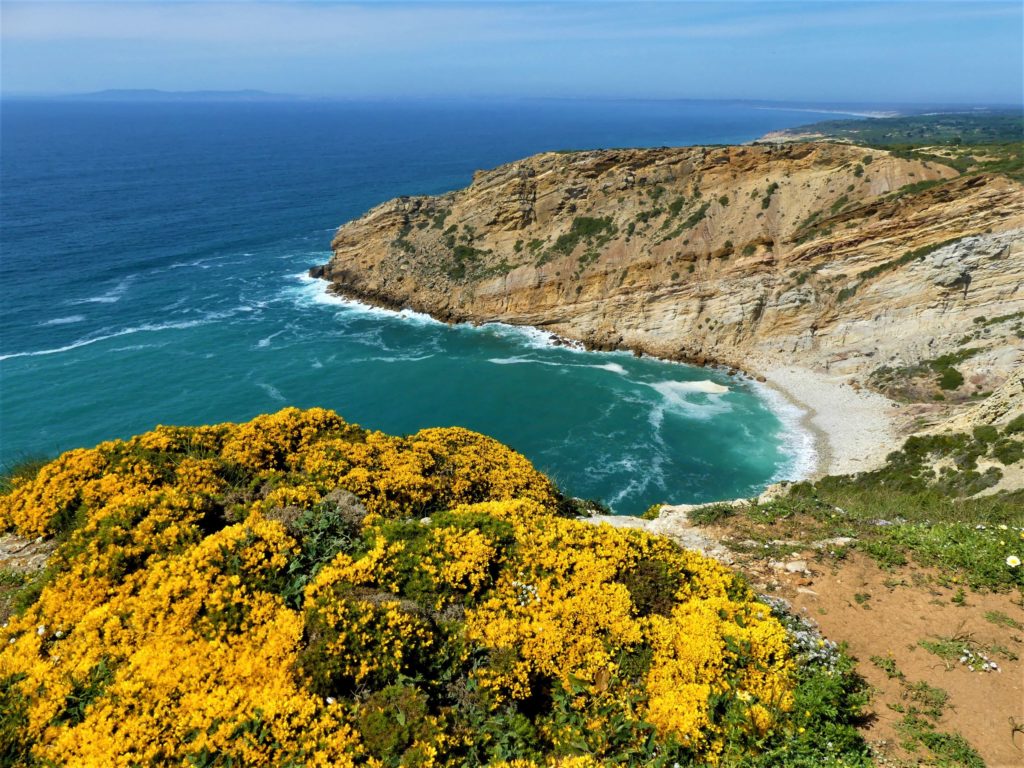
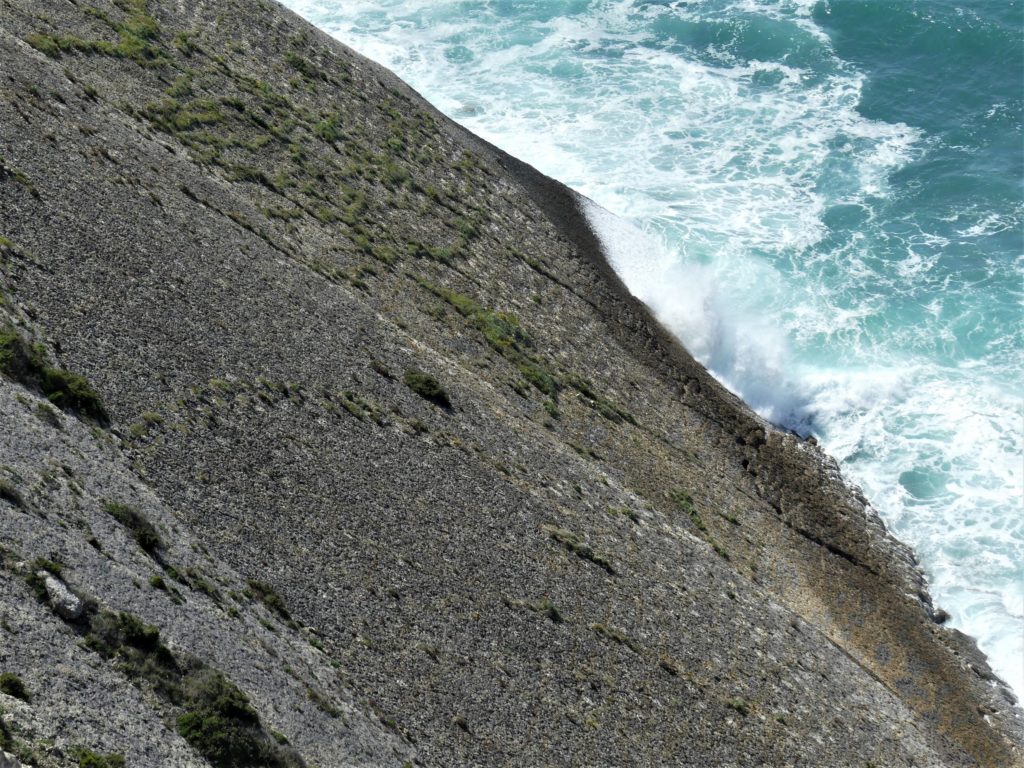
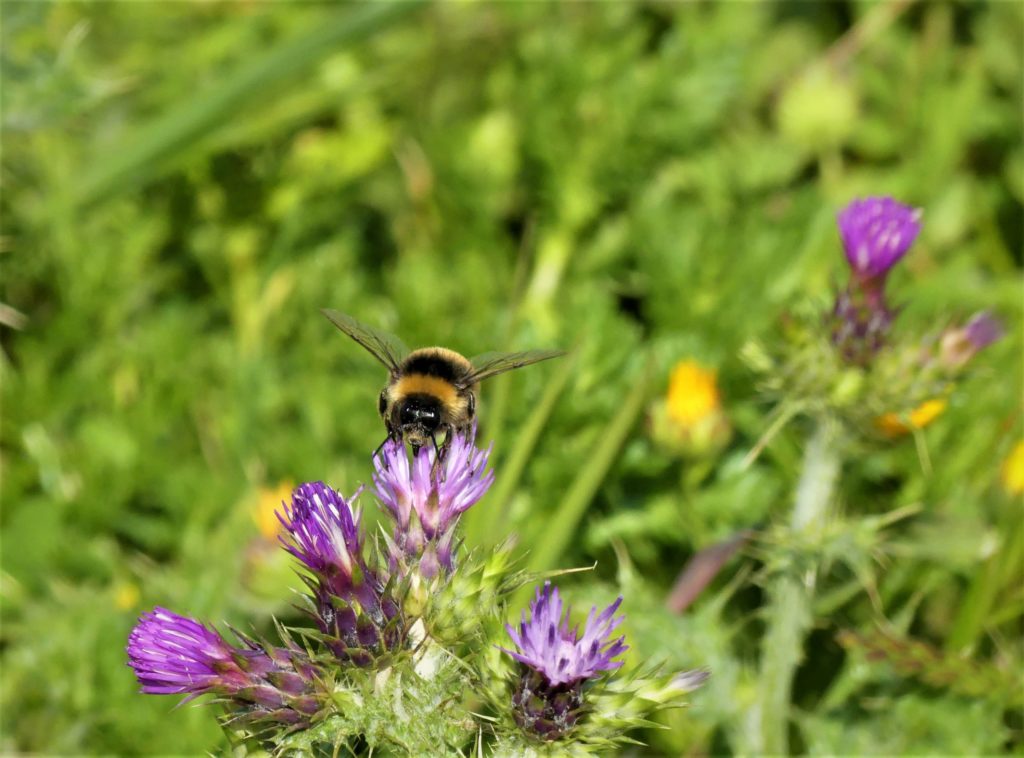
In stark contrast to this is Cabo Espichel, the magnificent, windswept cape in Setúbal’s South West corner. You can see how the landscape changes as you approach the cape, with trees becoming smaller, bent and hunkered against the landscape by the constant force of the Atlantic wind. Here cliffs more than 130m high plunge into the ocean, battered by immense swells. There’s a lonely lighthouse and an elegant 17th Century church. Over 150 million years ago, the cliffs that now dive into the ocean were a lush flat plane, the home of dinosaurs. The tracks of a group of immense sauropods, long-necked, plant-eating dinosaurs, walking in line, are etched into cliffs that have been tilted by the titanic geological forces of our earth. It’s another of the Peninsula’s fascinating and thought-provoking attractions. A human life is a tiny and fleeting thing in the great history of our world.
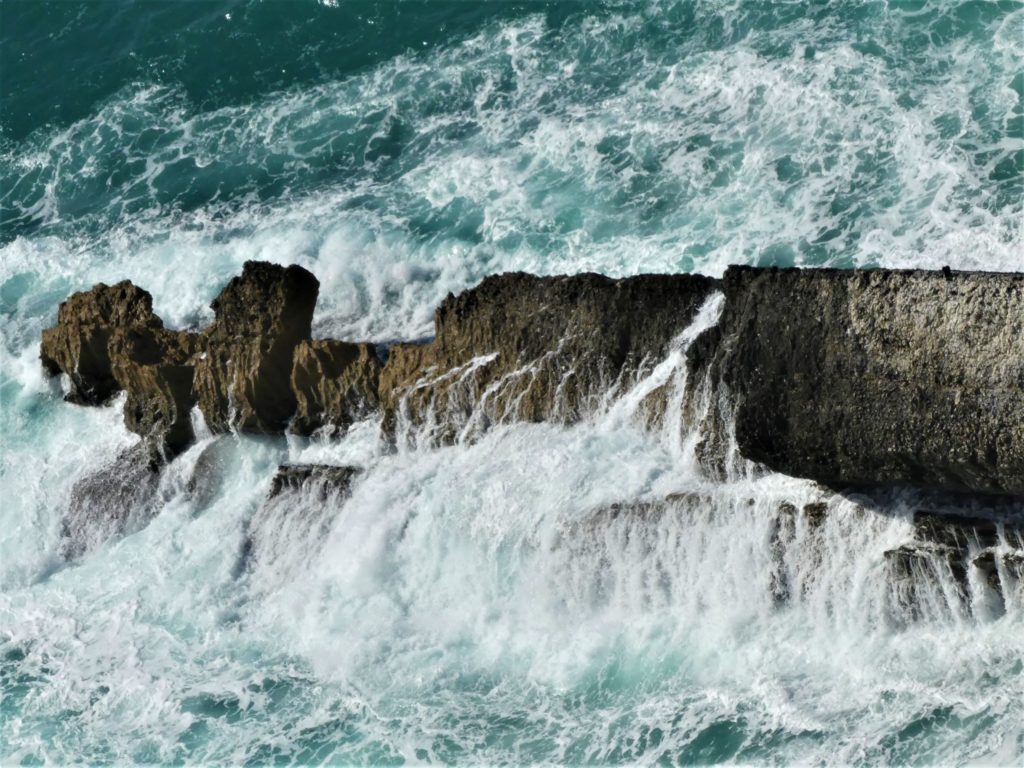
For me, Espichel’s greatest attraction is the sweeping views…The sound and sight of the precipitous cliffs shaded in bands of orange, yellow and grey and the vast sweep of the ocean, the salty whiff of the sea, and clouds of gulls, riding the powerful thermals generated by Atlantic winds that clash with the lofty cliffs. The Setúbal Peninsula is a region worth a few days of anybody’s time.
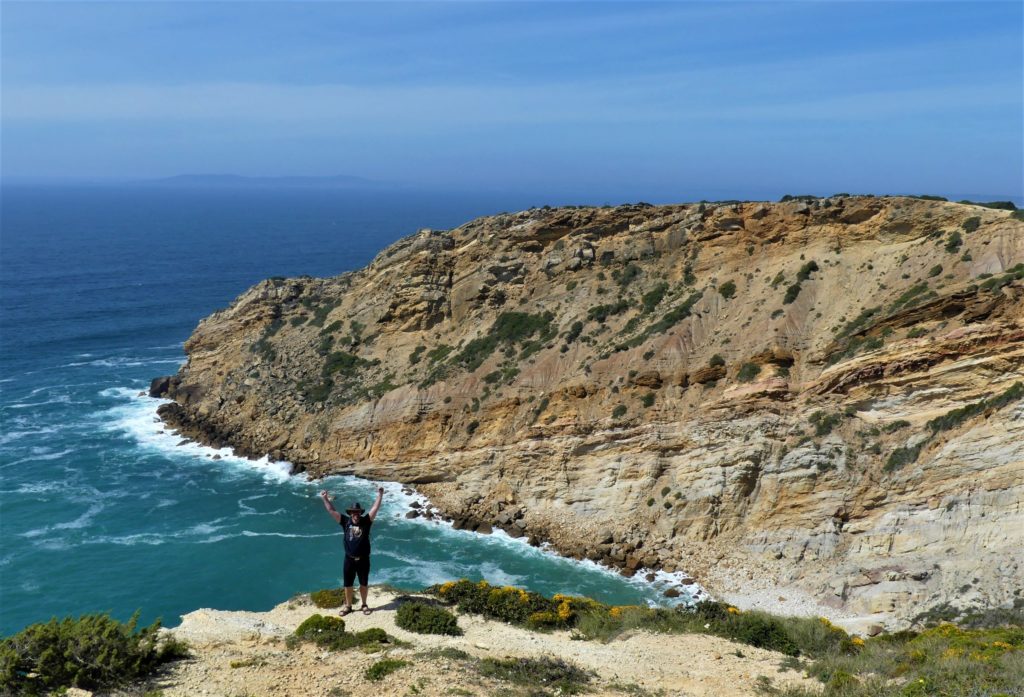
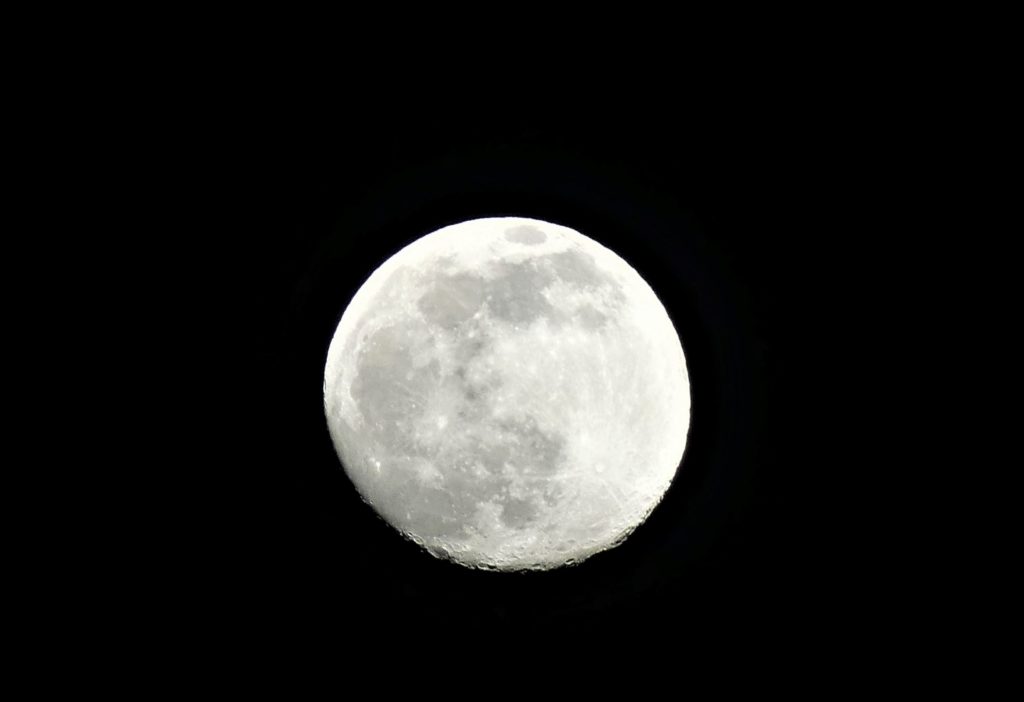
For more on travel in Portugal:
Portuguese street art: Eye-popping graffiti and elegant azulejos – The Lacandongringo
Algarve – by the seat of your pants! – The Lacandongringo
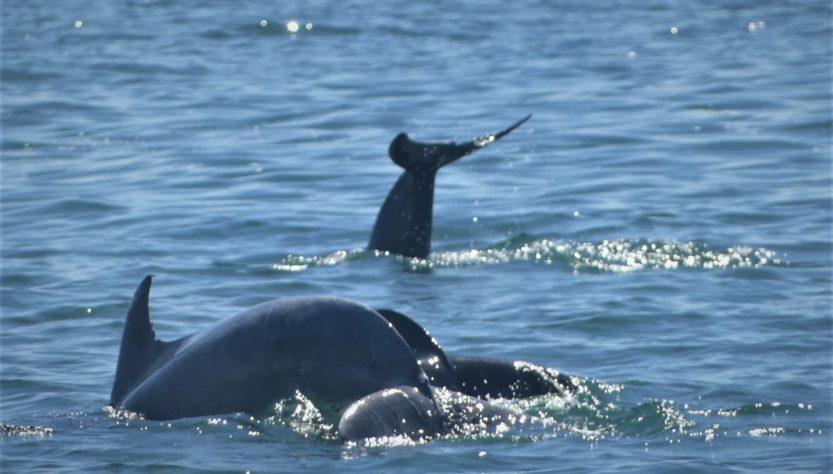
A beautifully written article and super photos Steve.
Bringing back the memories of our week together.
Thanks Jane…It was an awesome week!
I really want to visit here after reading this! Thanks Steve!
Pleasure…If you have any questions drop me a line!
Congratulations !!!!!
Nice report
Thank you Carlos!
Thank you!!
Great Ideas for the next summer!
Thanks Carmen!
Congratulations.
Nice Photos!!!
Thanks mate!
Nice writing Steve, makes me want spend some time there myself, one day maybe!
Thanks mate! One day!